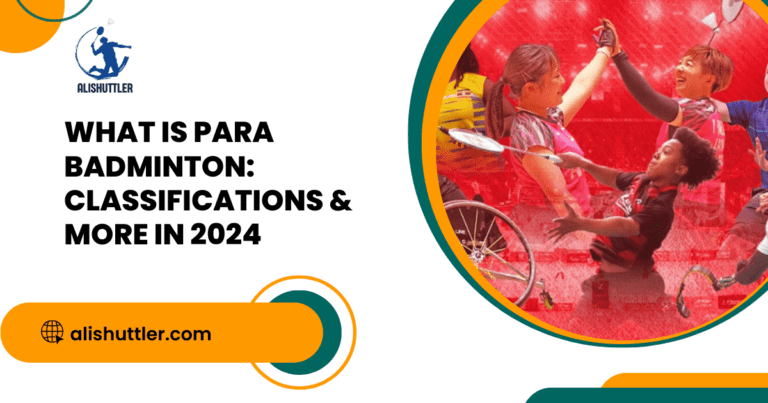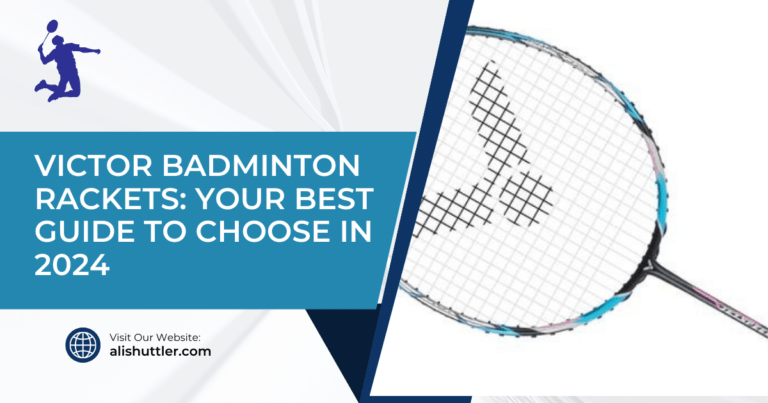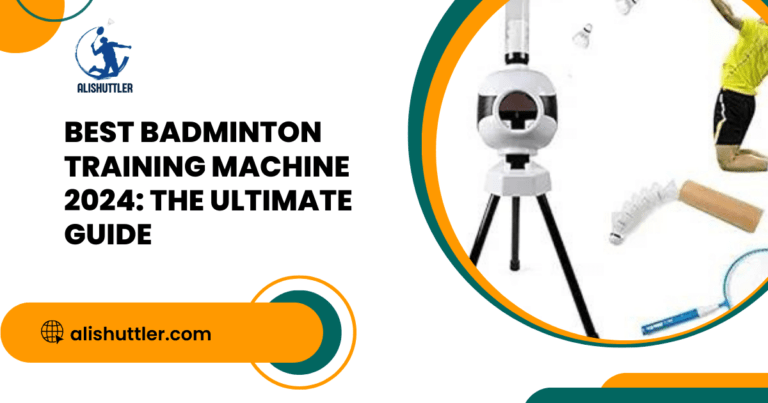Have you ever wondered why a real shuttlecock important in badminton? Well, let me tell you, it’s not just a feathered projectile. This little thing is the heartbeat of the game, influencing every shot and rally. The benefits that players get from the racket and ball are unparalleled.
When players hit the shuttlecock with their racket, it moves quickly and in a certain direction. This is important in badminton. Players try to be accurate with the shuttlecock to win. Real feather shuttles are special because they fly in a challenging manner. They are unpredictable and make the game interesting.
Table of Contents
The Aerodynamics of Shuttlecocks and Player Performance
Understanding the aerodynamics of real feather shuttles, also known as feather birdies, can greatly improve a player’s performance. Factors such as drag, lift, and stability have a significant impact on how players control their shots and achieve the desired flow and impact. By mastering the aerodynamics of these shuttlecocks, players are able to execute precise shots with ease.
Good badminton players know that different birdies fly at different speeds, which can affect how they play. They need to adjust their techniques based on how the birdies fly in order to make accurate shots. Wind and other factors can also change how the birdies move. Skilled players understand this and use it to get better at the game.
Factors to Consider for Optimal Gameplay with Shuttlecocks
Playing badminton with shuttlecocks requires careful consideration of various factors to ensure optimal gameplay. Let’s explore some key points that players should keep in mind:
Altitude, Temperature, and Humidity
- Players must take the altitude into account, as it affects the flight and speed of shuttlecocks.
- Temperature and humidity also play a significant role in shuttlecock performance.
- Different conditions require adjustments in technique and shot selection.
Shuttlecock Selection
- Choosing the right type of shuttlecock is crucial for adapting to different playing conditions.
- Feather shuttlecocks are more suitable for professional play due to their superior flight characteristics.
- Plastic or nylon shuttlecocks are more durable and ideal for recreational games or outdoor play.
Proper Storage and Maintenance
- Storing shuttlecocks correctly ensures consistent performance over time.
- Avoid exposing plastic shuttlecocks, badminton shuttlecocks, feather shuttlecocks, and nylon shuttlecocks to extreme temperatures or direct sunlight, as this can affect their shape and durability.
- Regularly inspecting and replacing damaged feathers or skirts of the nylon shuttlecock helps maintain the optimal performance of the right shuttle. By keeping an eye on the typical shuttle and replacing any damaged parts, you can ensure that your badminton shuttle is always in top condition.
Familiarity with Brands and Models
- Players should try different brands and models of shuttlecocks to find their favorite. Each brand may have a different flight, durability, and feel. Trying different options will help players adapt to different conditions and have a fun game of badminton.

Unique Aerodynamic Characteristics of Shuttlecocks
Shuttlecocks, whether they are made of feathers or synthetic materials, possess distinct aerodynamic properties that greatly impact their flight. These characteristics play a crucial role in the game of badminton and explain why shuttlecocks are so important to players.
- Feathered shuttlecocks, also known as real shuttlecocks, exhibit a feathered or synthetic skirt that affects their flight patterns differently than synthetic alternatives. The use of feathers provides these shuttlecocks with better control during play.
- However, it is important to note that feathered shuttlecocks are more susceptible to wind conditions. Their delicate nature means that even slight gusts can alter their trajectory and make them challenging to hit accurately.
- On the other hand, synthetic shuttlecocks, commonly referred to as plastic shuttlecocks, offer consistent flight due to their uniform construction. While they may lack the natural feel provided by feathers, they provide players with reliability and stability during matches.
- The shape and weight distribution of the base contributes significantly to the overall aerodynamics of shuttlecocks. These factors influence how the shuttlecock moves through the air and interacts with racket strokes.
Knowing how the shuttlecock flies helps players play better. They can choose between feathered or synthetic ones based on what they like and the conditions they’re playing in. Thinking about things like the wind before choosing can help players do their best. Understanding why the shuttlecock matters helps players pick the right equipment for games.
Feather vs. Synthetic Shuttlecocks: Pros and Cons
Feather shuttles are made from real feathers and fly really well, but they are delicate and expensive. Synthetic shuttles are good for playing and practicing because they last a long time and are not expensive. Professional players have different preferences too.
To summarize:
Pros of Feather Shuttles:
- Superior flight quality
- Enhanced accuracy during gameplay
Cons of Feather Shuttles:
- Delicate nature
- Higher cost compared to synthetics
Pros of Synthetic Shuttles:
- Durability
- Cost-effective option
Considering these pros and cons alongside individual needs and circumstances will help players make an informed decision about which type of shuttlecock best suits their requirements.
The Impact of Drag Coefficient on Shuttlecock Performance
The drag coefficient plays a crucial role in determining the performance of a shuttlecock during play. It directly affects the speed, distance, and stability of the shuttlecock while it is in flight. Understanding its significance can help players strategize their shots effectively.
- A lower drag coefficient allows for faster shots and longer rallies. When the drag coefficient is minimized, the shuttlecock experiences less air resistance, enabling it to travel at higher speeds across the court. This not only makes for exciting gameplay but also gives players an advantage by allowing them to hit powerful shots that are harder for opponents to return.
- Players have control over the drag coefficient through shot technique and shuttlecock selection. By adjusting their stroke technique, players can manipulate how much air resistance affects the shuttlecock’s trajectory. Selecting shuttlecocks with specific design features can influence the drag coefficient as well.
- Manipulating the drag coefficient of a shuttle requires skill and knowledge. Players must understand how factors such as feather density, skirt design, and head shape impact the drag coefficient of the shuttle. By experimenting with these elements, players can find a balance that suits their playing style and maximizes their performance on the court.
By recognizing how crucial the drag coefficient of a feather shuttlecock is to badminton gameplay, players gain a competitive edge. They can strategically adapt their shots based on environmental conditions or opponent strategies to exploit or counteract varying levels of air resistance from the feather shuttlecock. Ultimately, mastering this aspect of badminton enhances overall gameplay and increases opportunities for success on the court with a feather shuttlecock.
Tips and Techniques for Working with Shuttlecocks
Proper grip, hand-eye coordination and footwork are essential to controlling the shuttlecock. Mastering different shot techniques such as clears, smashes, drops, and net shots improves gameplay. Regular drills focusing on shuttlecock control improve players’ skills. Adapting to different playing conditions by adjusting shot power and angle is the key to success.
Players need to learn how to hold the racket correctly and move their feet quickly. They should also practice different shots like clears, smashes, drops and net shots. Regular practice is important to getting better at controlling the shuttlecock. Players also need to be able to adjust their shots depending on the conditions and their opponents.
Unveiling the Origins and Name of the Shuttlecock
Feather shuttlecocks, commonly known as birdies, hold immense significance for players. Let’s delve into their origins and how they acquired their intriguing name.
- The evolution of shuttlecocks can be traced back to ancient civilizations such as China, Greece, and India. These cultures recognized the value of a lightweight object that could be propelled through the air during recreational activities.
- Interestingly, the term “shuttlecock” derives from its resemblance to a small shuttle used in weaving looms. This unique shape with feathers attached to a cork base allows it to soar gracefully through the air.
- Over time, shuttlecocks have undergone significant transformations. From primitive materials like feathers and cork, they have evolved into modern designs crafted by various brands. These advancements aim to enhance performance and durability on badminton courts worldwide.
- The name “shuttlecock” is universally recognized across different languages due to its historical significance. It has become synonymous with this feathered projectile that badminton players skillfully strike back and forth during intense matches.
- To maintain optimal performance, players often choose shuttlecocks based on personal preferences. Some prefer those made with real feathers for their authentic flight characteristics, while others opt for synthetic options designed for consistency and resilience.
- Certain brands have gained popularity within the badminton community due to their exceptional quality and reliability. Players often trust specific brands when selecting shuttlecocks that suit their playing style.
The origins of feather shuttlecocks can be traced back centuries ago when ancient civilizations recognized the joy of propelling lightweight objects through the air. Today, these birdies continue to captivate players worldwide with their unique design and historical significance.
Construction and Materials of Shuttlecocks: Exploring the Differences
Feather shuttles are made by attaching goose or duck feathers to a cork base using glue. These shuttles offer a unique combination of durability and flight characteristics. The fins provide stability and control, while the cork base ensures mid-range speeds suitable for players of all levels.
Synthetic shuttles are made with a nylon or plastic skirt and a rubber or foam base. They last longer and fly continuously. They are not as affected by humidity as feathered shuttles. Winged shuttles have more spin and are good for accurate shots. They also cover greater distances because of their wings. Artificial shuttles are faster and have a more predictable trajectory. Manufacturers are always trying new materials to improve shuttlecocks. They use different plastic for the skirt and different rubber/foam for the bases. Players can find shuttlecocks that suit their style and appeal.
Temperature’s Influence on Shuttlecock Performance
Temperature plays a crucial role in determining the performance of shuttlecocks for players. Both feathered and synthetic shuttles are affected differently by temperature, impacting their flight characteristics.
- Different Effects on Shuttle Speeds: Colder temperatures tend to make shuttles slower, while warmer temperatures can increase their speed during flight. This variation in shuttle speed directly impacts the gameplay and strategies employed by players.
- Adapting Gameplay and Shot Techniques: Players must adapt their gameplay and shot techniques according to the temperature conditions. In colder temperatures, they need to account for the slower shuttle speed, adjusting their timing and power accordingly. Conversely, in warmer temperatures with faster shuttles, players may need to refine their control and precision.
- Durability Impact: Temperature also affects the durability of shuttlecocks. Extreme heat or cold can potentially impact the performance of both feathered and synthetic shuttles. High heat may cause feathers to wilt or synthetic materials to deform, while extreme cold can make them brittle or less responsive.
Understanding how temperature influences shuttlecock performance is vital for players seeking consistent play regardless of atmospheric conditions or altitude variations.

The Different Types of Shuttlecocks and Their Significance
Shuttlecocks come in different types for different kinds of games. Some are for fun, and some are for serious matches. The kind of shuttlecock you use can make the game faster or slower. It can also affect how well you play and react. Shuttlecocks have different speeds. Some are slow, and some are fast. The speed depends on the feathers and how they are made.
Slow ones are easier to control, while fast ones make the game more exciting. The speed affects how you play and choose your shots. There are different kinds of shuttlecocks for different players and games. You can pick the one you like best. It depends on your skills, where you play, and the rules of the game.
- Feather Shuttlecocks: Made with real feathers, these shuttles provide an authentic flight trajectory but require careful handling due to their delicate nature.
- Nylon Shuttlecocks: Constructed with synthetic materials, nylon shuttles offer durability and consistency in flight.
- Training Shuttlecocks: Designed specifically for practice sessions, training shuttles are often made from cheaper materials to withstand frequent use.
Selecting the right type of shuttlecock is crucial for players to optimize their performance on the court. It allows them to adapt to different playing conditions and enhance their overall gaming experience.
Why is Shuttlecock Important to Players? Conclusion
In conclusion, the shuttlecock plays a vital role in the game of badminton. Its unique aerodynamic characteristics and construction materials significantly impact player performance. Whether using feather or synthetic shuttlecocks, players must consider factors like drag coefficient and temperature to optimize gameplay. Understanding the origins and name of the shuttlecock adds an interesting historical perspective to this essential piece of equipment.
To enhance your skills with shuttlecocks, here are some tips and techniques you can try:
- Practice controlling your shots by adjusting the angle at which you hit the shuttlecock.
- Experiment with different shuttle grips to find what works best for you.
- Focus on footwork to improve your positioning and reach for better shot execution in the shuttle.
- Vary your shots in badminton by using different strokes such as shuttle smashes, drops, clears, and drives.
Choosing the right shuttlecock is important for a good game. Think about things like where you’re playing, how good you are, and what you like when you pick between feathers or synthetic ones. So why wait? Get your racket and go play badminton with a good shuttlecock!
FAQs
Q: How often should I change my shuttlecocks?
A: The lifespan of shuttlecocks varies depending on factors like usage frequency and quality. On average, professional players tend to replace them every 1-3 games or when they become too worn out.
Q: Can I use feather shuttlecocks for outdoor play?
A: Feather shuttlecocks are primarily designed for indoor play due to their delicate nature. Outdoor use can quickly damage them as wind resistance affects their flight stability.
Q: Are synthetic shuttles more durable than feather ones?
A: Yes, synthetic shuttles generally have greater durability compared to feather ones. They can withstand rougher handling and last longer before needing replacement.
Q: What is the difference between nylon and plastic shuttlecocks?
A: Nylon shuttlecocks are made from synthetic materials, while plastic shuttlecocks are typically made from a combination of plastics. Both types offer durability, but nylon shuttlecocks tend to have better flight performance.
Q: Can I use different types of shuttlecocks in the same game?
A: It is generally recommended to use the same type of shuttlecock throughout a game for consistency. Mixing different types may result in variations in flight characteristics and affect gameplay.






